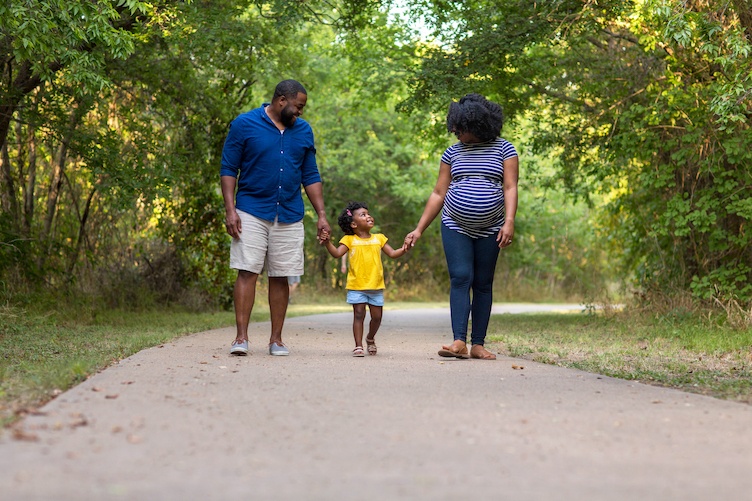
Pregnant women residing in walkable communities not only engage in more physical activity but are also more likely to experience favorable birth outcomes, according to research co-authored by University of New Hampshire Professor Karen Conway.
The research, published in the August edition of Economics and Human Biology, found that expectant mothers in more walkable counties tend to engage in more walking and exercise. Additionally, they are less prone to experiencing preterm birth, low birth weight, gestational diabetes and gestational hypertension. Surprisingly, however, the study did not establish a clear connection between walking and its impact on gestational weight gain or macrosomia (high birth weight).
Conway, an economics professor at UNH Paul College of Business and Economics, and her co-author Andrea Menclova, associate professor of economics at the University of Canterbury, undertook the study to see if there was a causal relationship between walkability and pregnancy outcomes.

“There is a huge area of health economics, where economic theory and empirical tools are used to analyze factors and policies that affect health outcomes, including those during and after pregnancy,” Conway says “One policy intervention is to improve the built environment. Our study helps provide information regarding the possible benefits of such an intervention and so can inform whether such interventions may be cost-effective.”
Going into the study, the researchers anticipated that their main finding would be that walking would help curb gestational weight gain or macrosomia. While no such connection was established, Conway says that it makes sense in hindsight that walking by itself is probably not going to prevent weight gain.
However, the study shows that walking more likely leads to a higher level of overall health, which can lead to a wider array of good outcomes, including a reduction in common pregnancy complications.
“Gestational diabetes is a growing issue. Low birth weight, preterm babies is also always a problem, they just have so many more complications,” Conway says. “Even though our primary avenue didn’t pan out, the outcomes we did find are just as important. In a way, who cares about gestational weight gain if, at the end of the day, the mom and the baby are in better health?”
In their study, the researchers combined walkability measures created by the Environmental Protection Agency (EPA) with detailed individual-level data on physical activity from the Behavioral Risk Factor Surveillance System (BRFSS) and pregnancy outcomes from the National Vital Statistics Natality Detail Files (NDF), respectively.
Through their analysis, they found that a 10-point increase in the walkability index — equivalent to transitioning from the "least walkable" to the "most walkable" category — is associated with a more than 70-minute increase in weekly exercise among pregnant women. This same change results in an 0.8 percentage point increase in the likelihood of a full-term birth, a 0.07-week extension in gestational age, a 27g increase in birth weight and a reduction in the likelihood of gestational diabetes and hypertension by 1.5 and 0.7 percentage points (equivalent to 27% and 16%) respectively.
Conway acknowledged that walking isn’t the sole benefit of living in a walkable community, and pregnant women likely also benefit from more time spent outdoors and increased social interaction.
“You might think that walkability could have a number of health effects, besides making you walk more. If by being more walkable, you get outside more, you interact with your neighbors, all of those types of social capital and intrinsic activities could lead to better health,” she says.
Conway and Menclova, who earned her master’s and doctoral degrees from Paul College, have previously collaborated on research regarding maternal outcomes and were both intrigued by the measure of walkability because walking is the main source of exercise for pregnant women, and walkability is a measure that hasn’t seen much focus from economists.
Conway believes this study may just be scratching the surface of potential research into walkable communities and health outcomes and is interested in doing additional studies.
“I think there’s a lot of work to be done there,” she says. “I think a lot of our health woes in this country are a function of the built infrastructure. How unwalkable a lot of areas are, with no sidewalks and busy roads. Personally, it’s something I feel strongly about.”
-
Written By:
Aaron Sanborn | Peter T. Paul College of Business and Economics | aaron.sanborn@unh.edu

















































